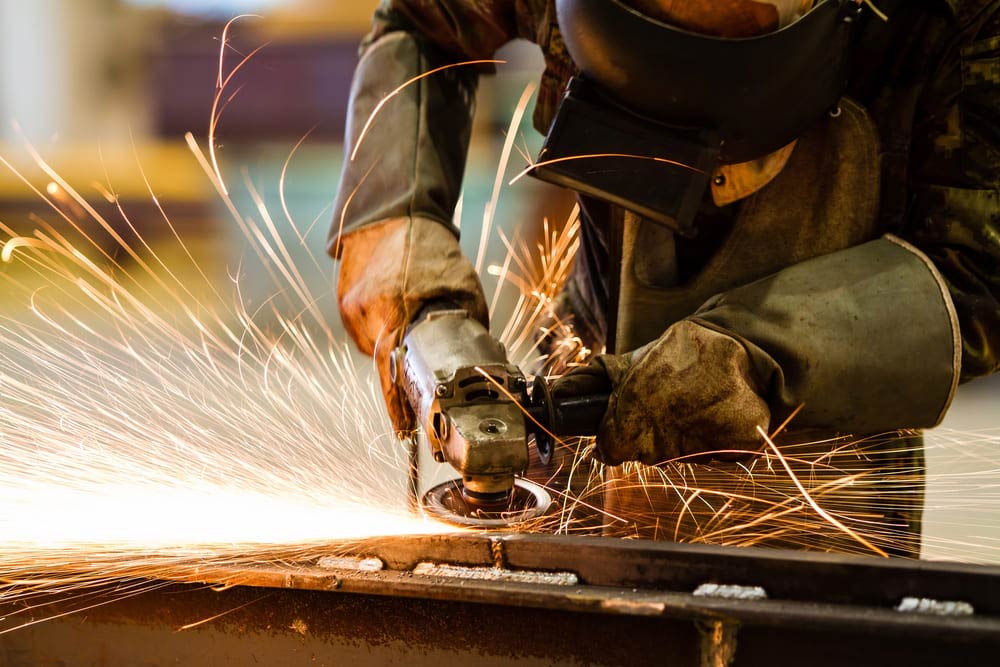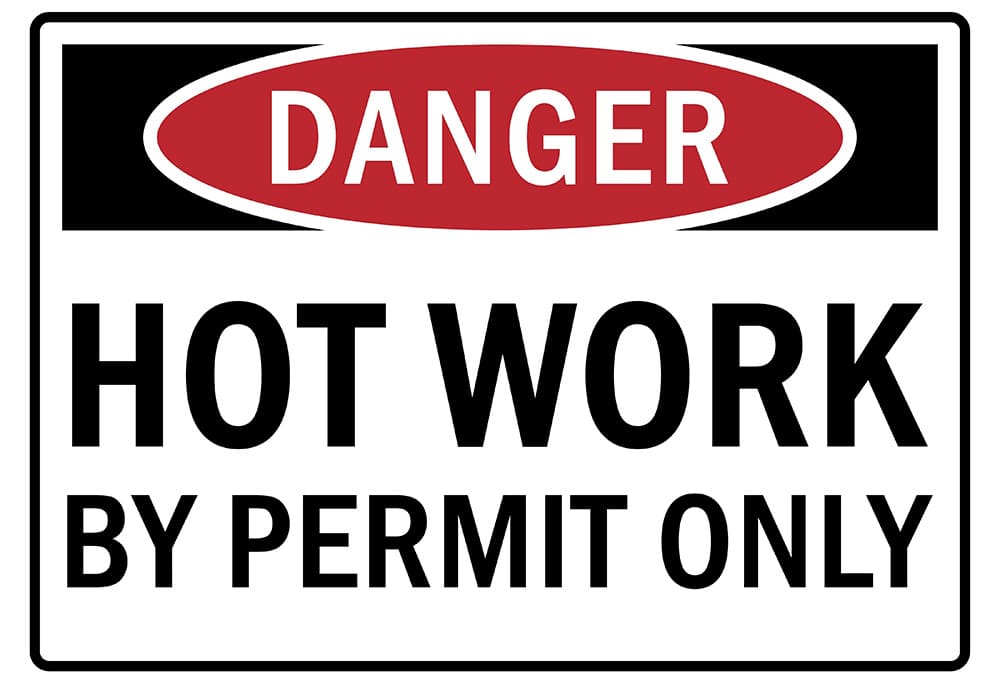
Hot work is what you probably think it is – work that involves flames, sparks or heat.
There are inherent risks to this type of work, which employers must work to assess and control. As part of these controls, a hot work permit is usually necessary.
Read our guide if you or your staff engage in hot work activities. It covers hot work control measures and when a permit is needed.
Different Types of Hot Work
The Health and Safety Executive (HSE) defines hot work as ‘any process that generates flames, sparks or heat.’
Standard procedures that fit this definition are cutting, grinding or sawing.
Heat application processes are also classified as hot work—for example, flame cutting, welding or soldering.
Whatever form it takes, hot work tasks always carry risks, so they must be appropriately managed.
Hot Works Risk Assessments
Before establishing any risk control measures, employers must complete a hot works risk assessment.
This process is similar to other workplace risk assessments – you identify the hazards, evaluate risk levels and decide on necessary control measures. And after controls have been implemented, you review and adjust them accordingly.
Common Hazards
All forms of hot work pose a fire risk. Flames, sparks, or heat can all ignite a fuel source if not adequately controlled, so focus on these hazards first.
Depending on the type of hot work, you may also need to monitor:
- Heat exposure – workers can suffer from burns, exhaustion or heat stroke when exposed to extreme temperatures
- Fumes/gases – activities such as welding can produce harmful fumes or gases
Hot Work Control Measures
The risk controls you need should be specific to your workplace and the type of hot work you engage in, so you may need to implement measures not listed here.
However, below are a few risk controls applicable to most forms of hot work:
Eliminate Heat
The most effective control measure is removing heat from any process entirely, as this eliminates fire risk completely.
For example, most sheet metals can be cut cold using hand shears. Steelwork fabrications can also be bolted together instead of welded.
Remove Flammable or Combustible Materials
It won’t always be possible to use an alternative method, however. If heat, flames or sparks are unavoidable, you must identify and remove flammable or combustible materials from the work area. Be mindful that certain vapours from paints or solvents are also combustible.
If it’s impossible to remove combustible materials from the work area, preventing the transmission of sparks or heat may be a suitable solution. Put up guards or cover openings where sparks may escape from. However, some materials conduct heat and won’t offer appropriate protection.
Equipment Controls
Employers must maintain all equipment in safe working order, so checking equipment before use is necessary. Equipment hazards might be electrical, such as exposed or frayed wiring. Hoses and valves on equipment should also be inspected for cracks or leaks.
Other hazards are inherent to the equipment. For example, cutting torches will still be hot after use, so ensure they’re stored safely away from potential fuel sources after activities are finished.
Personal Protective Equipment (PPE)
Employers must also provide PPE and instruct workers on its proper use if required. It’s also necessary for employers to replace or repair any PPE in poor condition.

Suitable PPE will vary depending on the task, but standard pieces include:
- Gloves
- Eye protection
- Face shields
Hot Work Permits
Hot work permits, formally known as permit-to-work systems, are another control measure.
A permit-to-work system is a recorded process meant to control hazardous work. They are also a communication tool when that work involves more than one party.
A permit-to-work should:
- Name who can safely carry out a task
- Set a time frame for completion of work
- List necessary safety precautions
- Describe how work will be done (this can be in the form of a detailed ‘method statement’)
The permit-to-work is similar to a risk assessment but is not interchangeable. A risk assessment is always necessary. If a permit-to-work is also needed, it must be a separate recorded document.
Your permit-to-work system should be specific to the work being carried out and the environment it’s in. However, these systems aren’t unique to related jobs. On the HSE’s website, you can read more about the general principles that apply to these activities. We’ve also written about them in one of our previous guides.
When Is a Permit-to-Work System Needed?
The HSE states that a permit-to-work is usually necessary if work is:
- Non-routine (i.e. work that isn’t regularly undertaken in your workplace)
- Non-production (e.g. maintenance or repair)
- Shared between two or more individuals/groups
It’s not specified that all heat-generating work requires a permit-to-work. Still, the HSE does strongly recommend them for activities that:
- Use or generate heat
- Generate sparks or other potential sources of ignition
Considering the definition of hot works, you should establish a permit-to-work system for any hot works activities.

Hot Works Training
Hot work poses significant risks to those involved. Control measures alone aren’t enough to manage these risks; employees need to understand them, recognise why they’re required and know how to use them.
A permit-to-work doesn’t make something safe. Understanding and following the terms specified in the permit do.
Our online Hot Works Training course covers inherent risks and standard control measures that make the work safer. You’ll learn how accidents happen and what needs to be done to prevent them. The course also covers essential emergency procedures relevant to every type of hot work.



















































































































































































































































































































































































































































































































































































































































































































































